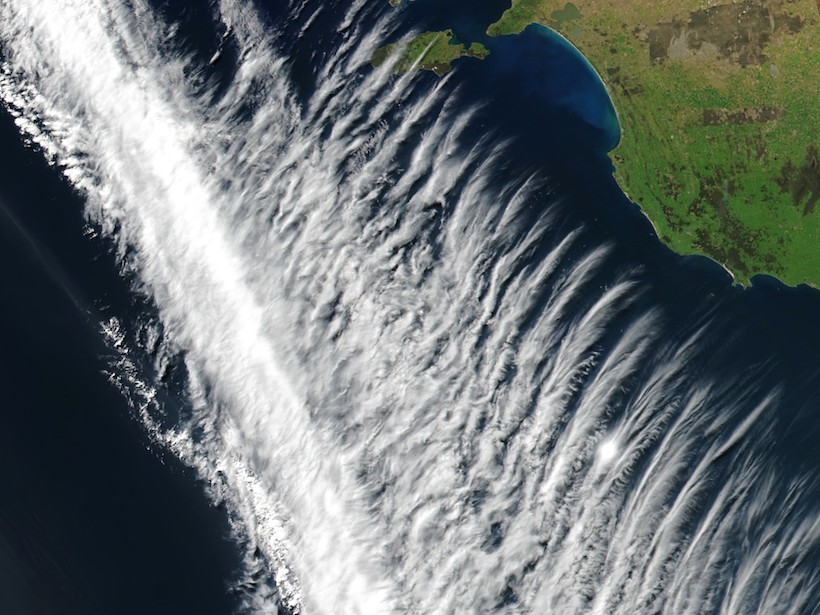Source: Journal of Geophysical Research: Space Physics
Atmospheric scientists have long recognized the importance of gravity waves in transporting momentum and energy in Earth’s atmosphere. These waves (which are different from gravitational waves studied in astronomy) occur when packets of air rise and fall under the competing forces of buoyancy and gravity. Many gravity waves form near Earth’s surface when air is forced upward by geographic obstructions such as mountains.
The formation of these primary gravity waves in the troposphere can trigger a chain reaction that results in the appearance of secondary and, eventually, tertiary waves higher in the atmosphere. Satellite observations suggest that these secondary and tertiary waves may play a key role in Earth’s uppermost atmosphere, the thermosphere. However, existing computer models have not successfully simulated the physics necessary to observe this formation process in action.
Becker and Vadas present a new general circulation model (GCM) to address this shortcoming. They modify an existing GCM, extending its vertical extent to an altitude of 450 kilometers and modeling additional physics, including the rapid variation of molecular viscosity and thermodynamic variables in the thermosphere. Although the resulting GCM simplifies some aspects of radiation and chemistry, the authors demonstrate that it produces reasonable results at low altitudes and successfully generates secondary and tertiary gravity waves higher up.
The model resolves gravity waves with wavelengths as small as 165 kilometers. In a simulation of winter in the Southern Hemisphere, these waves tended to concentrate at high latitudes, forming a hot spot over the southern Andes and Antarctica. During northern winter, similar concentrations formed over high-latitude landmasses, such as Alaska, Greenland, and Siberia. Larger gravity waves, with wavelengths up to 2,000 kilometers, were seen to propagate long distances, passing over Earth’s poles as they rose through the thermosphere. These early simulation results match existing observational data.
The researchers plan future upgrades to the GCM to better handle the effects of ionospheric processes and to allow for more responsiveness to weather conditions at lower altitudes. Although the early results confirm the approach used in their model, the authors suggest that the GCM will be most useful in enabling future novel investigations. (Journal of Geophysical Research: Space Physics, https://doi.org/10.1029/2020JA028034, 2020)
—Morgan Rehnberg, Science Writer
Citation:
Rehnberg, M. (2020), Successfully simulating atmospheric gravity waves, Eos, 101, https://doi.org/10.1029/2020EO149547. Published on 30 September 2020.
Text © 2020. AGU. CC BY-NC-ND 3.0
Except where otherwise noted, images are subject to copyright. Any reuse without express permission from the copyright owner is prohibited.
Text © 2020. AGU. CC BY-NC-ND 3.0
Except where otherwise noted, images are subject to copyright. Any reuse without express permission from the copyright owner is prohibited.

